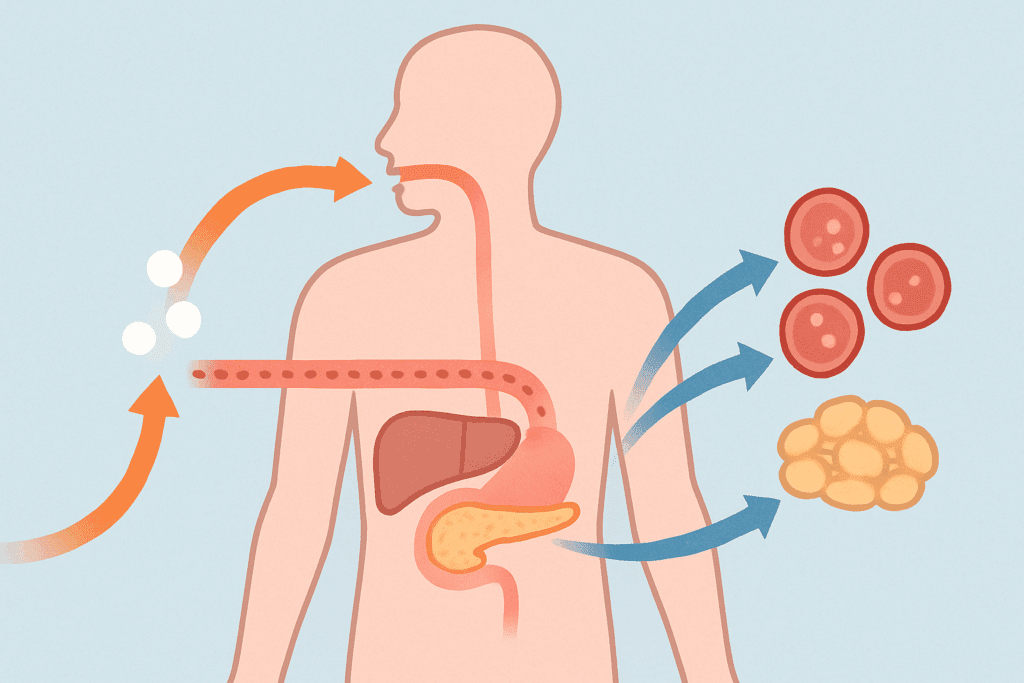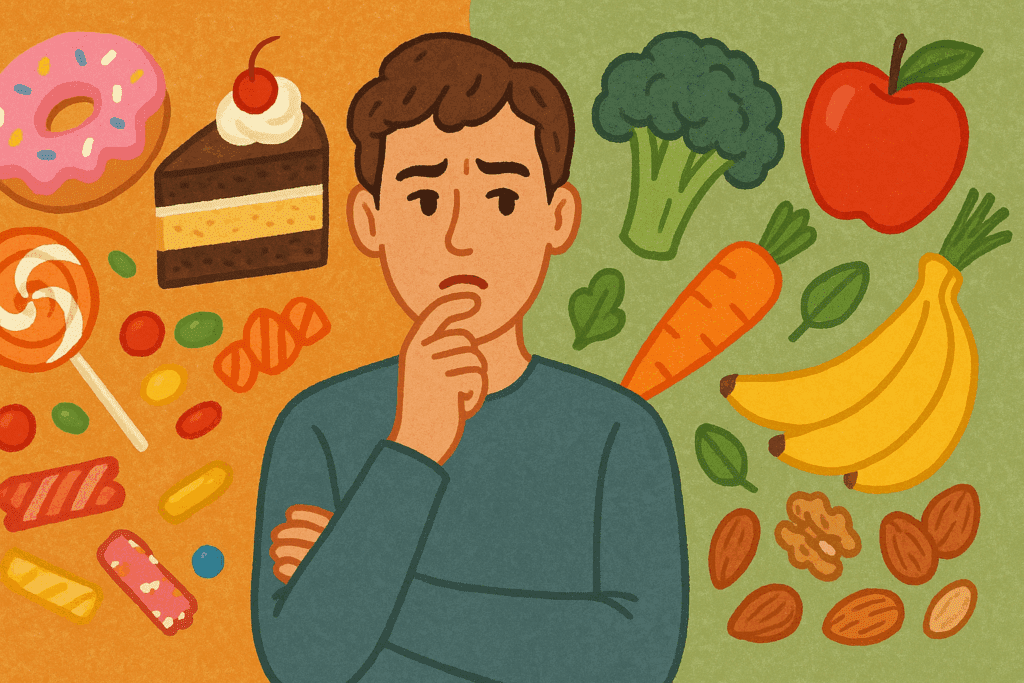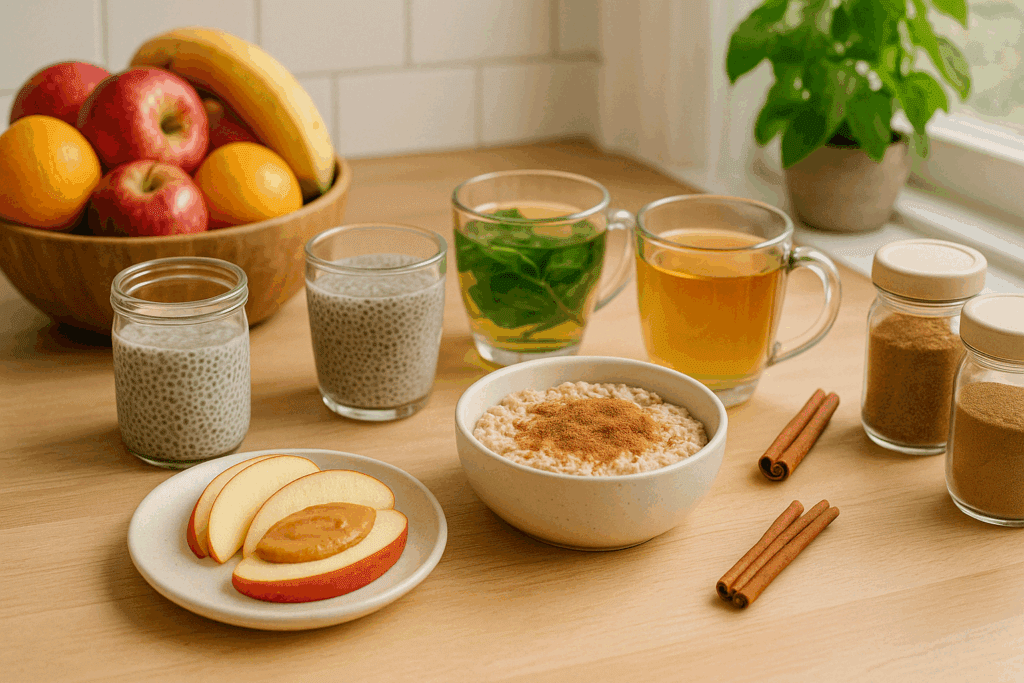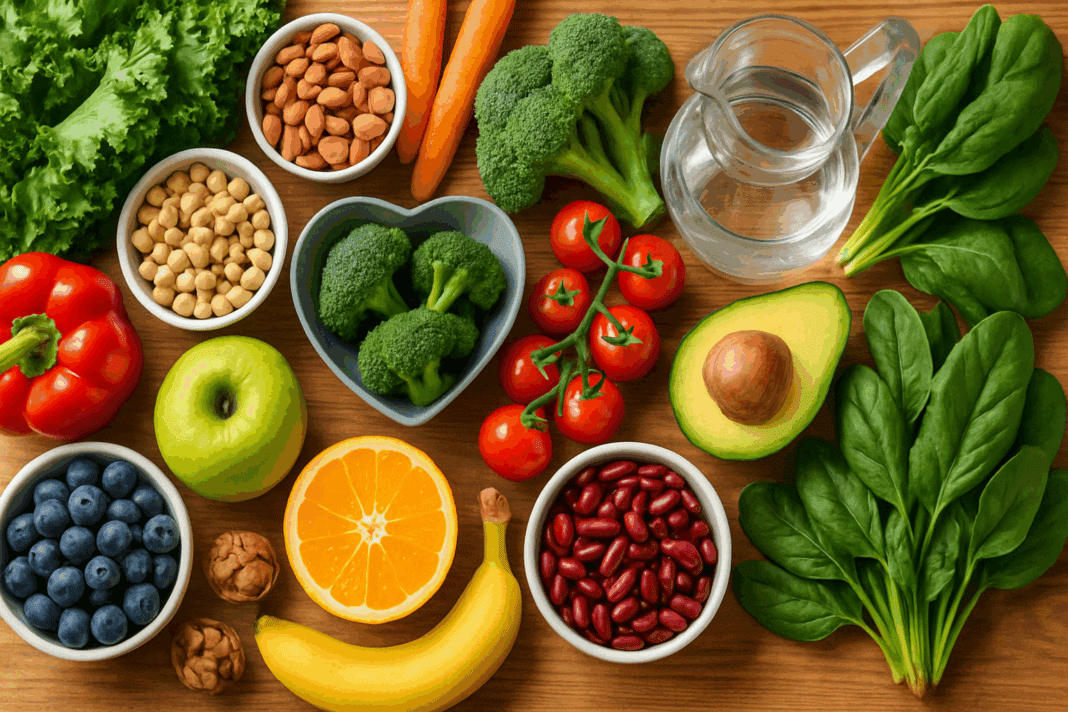Why Reducing Sugar Intake Matters More Than Ever
Sugar may be sweet, but its impact on the human body can be anything but. In today’s food landscape, added sugars hide in nearly every processed food, from sauces and cereals to yogurts and beverages. While a small amount of sugar can be part of a balanced diet, excessive intake is a leading contributor to many chronic diseases—including type 2 diabetes, obesity, non-alcoholic fatty liver disease, and cardiovascular problems. For people asking how to reduce sugar intake or how to get rid of sugar in your body, the answer begins with knowledge, not deprivation.
Understanding sugar’s role in your metabolic health helps make the case for reducing it. When you consume more sugar than your body can efficiently use, your insulin levels rise to store the excess glucose. Over time, this can cause insulin resistance, a hallmark of prediabetes and type 2 diabetes. People often notice symptoms like energy crashes, headaches, and mood swings—leading them to wonder how to flush sugar out of your body or how can I flush sugar out of my system fast. This article breaks down science-backed strategies that can help reset your system, minimize cravings, and promote lasting health.
You may also like: Why Am I Craving Sweets All of a Sudden? Expert-Backed Reasons and How to Stop Sugar Cravings Naturally

What Happens to Sugar in the Body?
To understand how to get sugar out of your system immediately, we must first understand what the body does with it. After ingestion, sugar enters your bloodstream and quickly raises glucose levels. In response, your pancreas releases insulin to help cells absorb and store that glucose. However, when sugar intake is constant and excessive, your body struggles to keep up. Insulin production becomes erratic, cells stop responding effectively, and sugar begins to circulate freely—damaging tissues and increasing fat storage.
That’s why so many people feel unwell after eating too much sugar. They often search for urgent solutions like how to flush sugar out of your body overnight or what they can do when they realize, “I ate too much sugar—how to detox?” While your body has built-in detox mechanisms (especially the liver and kidneys), you can support this process with hydration, movement, and food choices. A single sugar-heavy meal won’t cause disease, but repeated episodes without intervention might. The good news? You can regain control with mindful, informed decisions.

Why Cutting Back on Sugar Feels So Difficult
Many people underestimate the addictive nature of sugar. It lights up the brain’s reward center much like nicotine or alcohol, triggering a dopamine release that reinforces the desire for more. That’s why efforts to cut back often fail—especially when attempted through sheer willpower alone. Understanding this biological loop is crucial when considering how to decrease sugar intake without frustration.
Habit formation and emotional eating play major roles. People eat sugary foods when stressed, tired, or sad, not necessarily because they’re hungry. Food marketing compounds the issue, framing high-sugar items as “treats” or “comfort.” These psychological hooks are difficult to break. Knowing this helps reframe your journey—not as a failure of discipline, but as a process of rewiring habits. Asking how can you get rid of sugar in your body becomes less about fighting cravings and more about changing your internal and external environment to support healing.

How to Cut Back on Sugar Without Feeling Deprived
For many, the idea of reducing sugar sounds restrictive. But in practice, it opens the door to more satisfying and nutritious meals. Instead of focusing on what to remove, start focusing on what to add. Whole fruits, nuts, legumes, and seeds provide natural sweetness and satisfaction, while offering fiber, protein, and healthy fats. When people adopt this approach, they no longer ask how to get rid of sugar—because their cravings naturally begin to fade.
It’s also essential to read food labels carefully. Ingredients like evaporated cane juice, maltodextrin, agave nectar, and corn syrup are all forms of added sugar. Once you learn to spot these, you’ll have more power to choose wisely. Another tip? Use spices like cinnamon or nutmeg to enhance flavor without adding sweetness. Reducing sugar doesn’t mean bland food—it means rediscovering how delicious real food can be.
How to Flush Sugar Out of Your Body the Right Way
When people search how to flush sugar out of your body, they’re usually looking for a quick solution after a binge. While it’s not possible to remove every gram of sugar from your bloodstream instantly, there are realistic, effective strategies that can speed up recovery. Hydration is the first step. Water supports kidney function, which helps eliminate excess glucose through urine.
Next, eat high-fiber foods. Soluble fiber binds to sugar and slows its absorption, stabilizing blood sugar levels. Leafy greens, chia seeds, beans, and oats are excellent choices. Regular physical activity is another powerful tool—it uses glucose for energy and increases insulin sensitivity. These approaches don’t just help flush sugar out of your body, they support long-term blood sugar regulation, too. The key is consistency over gimmicks.
I Ate Too Much Sugar—How to Detox Gently and Effectively
We’ve all had days when we eat far more sugar than intended. If your first thought is, “I ate too much sugar—how to detox now?” the best strategy is to avoid extremes. Don’t skip meals, fast suddenly, or punish yourself with intense exercise. Instead, return to balance. Start the next meal with fiber, healthy fat, and protein to slow glucose spikes. Avocado toast on whole grain bread, or a smoothie with flax, spinach, and almond butter are good examples.
Drinking water with lemon can support hydration and digestion, though it’s not a magic flush. Herbal teas like dandelion root or ginger may also offer gentle liver support. The most effective “detox” is not a product—it’s rest, hydration, and nutrient-dense food. Within a day or two of consistent choices, most people feel a noticeable difference in energy, mood, and clarity.
How to Get Sugar Out of Your System Immediately: What’s Realistic?
While there is no scientifically validated way to fully get sugar out of your system immediately, you can begin lowering its impact within minutes. Drinking two to three glasses of water helps dilute blood sugar levels and begin the elimination process. A short walk—especially after a carb-heavy meal—can reduce blood glucose by up to 30% by increasing muscular uptake.
Consuming a tablespoon of vinegar before meals has also been shown in studies to reduce post-meal blood sugar. It works by slowing digestion and blunting glucose spikes. These are simple actions anyone can take. When integrated regularly, they not only help get rid of sugar in your body, but prevent major spikes from happening in the first place.

How to Burn Sugar in Your Body Through Movement and Muscle
One of the best ways to clear excess sugar from your bloodstream is to burn sugar in your body through physical activity. Glucose is your cells’ preferred fuel, and exercise increases your body’s demand for it. Resistance training, such as bodyweight exercises or lifting weights, builds muscle, which improves how efficiently your body uses glucose. Cardio, like brisk walking or cycling, activates this process even faster.
It’s also worth noting that high-intensity interval training (HIIT) has been shown to significantly enhance insulin sensitivity and reduce blood sugar. However, even low-intensity movement—like yoga, gardening, or dancing—can have a meaningful impact. The point isn’t to overdo it, but to move frequently and consistently. In time, this becomes your most powerful weapon in reducing cravings, stabilizing mood, and regulating your sugar metabolism.

How to Flush Sugar Out of Your Body Overnight: A Gentle Evening Routine
While it’s not biologically possible to completely flush sugar out of your body overnight, a well-structured evening can support your body’s natural detoxification and repair. Start by avoiding late-night snacks that are high in sugar or carbs, as they can cause blood sugar fluctuations that interrupt sleep. Instead, choose a small protein- and fat-based snack if you’re hungry—like Greek yogurt or a boiled egg.
Go to bed early and aim for deep, restorative sleep. During sleep, your body regulates hormones like insulin and cortisol, both critical for blood sugar balance. Drinking water before bed (without overdoing it) helps with overnight glucose processing. These practices may not offer a literal “overnight flush,” but they create the metabolic environment your body needs to recalibrate quickly and efficiently.
5 Ways to Reduce Sugar Intake Naturally and Sustainably
When it comes to sustainable change, here are five practical strategies to reduce sugar intake over time. First, focus on whole foods over processed ones. Second, identify and swap out your biggest sugar sources—soda, for example, can be replaced with sparkling water and a slice of citrus. Third, start your day with a protein-based breakfast to avoid mid-morning sugar cravings.
Fourth, keep healthy snacks on hand—nuts, hard-boiled eggs, and fruit are great choices. Fifth, prioritize sleep and stress management. Poor sleep and chronic stress drive sugar cravings through hormonal changes. These five ways to reduce sugar intake are grounded in physiology and psychology, offering results without rigid restrictions.
Building a Lifestyle Around Lowering Sugar Intake
Once you’ve learned how to decrease sugar intake, the next challenge is maintaining it long term. That’s where lifestyle design comes in. Creating a home environment free of high-sugar temptations, meal prepping healthy options, and leaning into supportive social circles can make a dramatic difference. Many people find journaling helpful—it tracks food, identifies emotional triggers, and builds awareness.
Eventually, the taste buds adapt. What used to taste normal may begin to feel overwhelmingly sweet. That’s a sign of progress. Lowering sugar intake isn’t a diet—it’s a lifelong skill. With patience and consistency, the body adapts, energy returns, and cravings fade. Sugar no longer controls your choices. You do.
Frequently Asked Questions: How to Reduce Sugar Intake and Detox Your Body Naturally
1. What are some overlooked reasons why sugar cravings are so intense, even when I’m not hungry?
Cravings for sugar are not always about physical hunger—they’re often rooted in emotional triggers and neurotransmitter imbalances. For instance, chronic stress elevates cortisol, which increases the desire for high-sugar foods as a quick energy fix. In some cases, low levels of serotonin can also lead to sugar-seeking behavior as a temporary mood enhancer. This highlights the importance of identifying emotional cues before they become dietary habits. If you’re trying to learn how to get rid of sugar in your body, it’s not just about dietary changes—it’s about understanding and managing the emotional patterns that drive excess intake.
2. Are there specific supplements or nutrients that help flush sugar out of the body more effectively?
Yes, several nutrients may assist your body in improving blood sugar regulation and metabolism. Magnesium plays a vital role in insulin sensitivity, and deficiencies are common in individuals who consume high amounts of sugar. Chromium picolinate has been shown in some studies to help lower fasting glucose levels and reduce carbohydrate cravings. While supplements can support metabolic processes, they are not a standalone solution for how to flush sugar out of your body—they work best when combined with whole foods, movement, and hydration. Consult a healthcare provider before adding supplements, especially if you are already on medications for blood sugar control.
3. If I only eat sugar occasionally, do I still need to worry about how to get sugar out of my system immediately?
Occasional indulgence is unlikely to cause long-term harm for most healthy individuals, but repeated spikes—even once a week—can add up over time. Frequent fluctuations in blood sugar may contribute to inflammation, fatigue, or insulin resistance. If you’ve had a sugary treat and feel off-balance, focusing on how to burn sugar in your body quickly—through light exercise, fiber intake, and hydration—can help restore equilibrium. Even occasional indulgences deserve mindful recovery, not guilt or extreme measures. Understanding how to get sugar out of your system immediately supports your body’s natural ability to reset without relying on trends or fads.
4. What role does gut health play in sugar detox and sugar cravings?
Emerging research shows that the gut microbiome significantly influences cravings, including those for sugar. Certain bacteria thrive on sugar and may “signal” your brain through the gut-brain axis to encourage consumption. Rebalancing your gut microbiota with prebiotics, probiotics, and fermented foods like kimchi or sauerkraut can reduce these cravings over time. This also impacts how to reduce sugar intake sustainably because a healthier gut environment naturally discourages the desire for added sugars. Improving gut health is an underrated but highly effective part of any long-term sugar detox strategy.
5. Can intermittent fasting help remove sugar from the body more quickly?
Intermittent fasting can enhance metabolic flexibility by giving your body a break from constant insulin spikes, which helps your cells burn stored glucose more efficiently. During a fasted state, insulin levels drop, and your body begins to shift toward fat-burning while utilizing residual sugar reserves. This can be a helpful tool if you’re asking how to remove sugar from the body or how can I flush sugar out of my system fast—but it must be approached with balance. It’s important to focus on what you eat during your eating windows: nutrient-dense, low-sugar meals are essential to maximize benefits. Always consult your doctor if you have medical conditions such as diabetes before starting a fasting regimen.
6. How does sleep quality impact the ability to detox sugar from the body?
Sleep plays a foundational role in regulating blood sugar and insulin sensitivity. Even one night of poor sleep can cause temporary insulin resistance, making it harder for your body to manage glucose. If you’re trying to flush sugar out of your body overnight, prioritizing 7–9 hours of uninterrupted rest is one of the most impactful steps you can take. Good sleep hygiene—like avoiding screens before bed and maintaining a consistent schedule—supports hormonal balance and helps regulate ghrelin and leptin, the hunger hormones. By improving sleep, you reinforce your body’s ability to naturally detox sugar and reduce long-term cravings.
7. How do social and cultural habits influence sugar intake, and how can we manage them better?
Social gatherings, holidays, and even workplace dynamics often revolve around sugary treats, making it harder to maintain your commitment to lowering sugar intake. Understanding these patterns can help you create strategies such as bringing a healthier option to share or setting boundaries around what you consume. Emotional association with celebration and sugar is deeply rooted, but redefining those rituals is key to how to cut back on sugar without feeling isolated. This shift is not just nutritional—it’s also cultural and psychological. Developing mindful eating habits in social contexts is one of the most underappreciated yet powerful tactics in long-term sugar reduction.
8. Are there any specific food pairings that can reduce the glycemic impact of meals?
Absolutely. Combining carbohydrates with fat or protein slows the absorption of sugar and reduces blood glucose spikes. For example, pairing fruit with nuts or toast with avocado provides a buffer that improves your body’s glycemic response. This approach supports how to decrease sugar intake without eliminating sweet foods entirely. You can still enjoy moderate amounts of natural sugars if you pair them wisely. This nuanced approach helps people understand how to get rid of sugar without needing to follow overly restrictive diets that aren’t sustainable long term.
9. What are signs that your body is successfully reducing its sugar dependence?
As you commit to lowering sugar intake, your body begins to show signs of improved regulation. These may include fewer energy crashes, reduced frequency of cravings, better mood stability, and improved focus. Some people also notice clearer skin, fewer digestive issues, and more restful sleep—all signs that you’re successfully supporting the body’s ability to flush sugar out of your body naturally. Importantly, your taste buds adapt over time, making naturally sweet foods like fruit taste even more satisfying. These changes are subtle but significant indicators that you’re not just detoxing sugar—you’re building long-lasting resilience.
10. Is there such a thing as a permanent sugar detox or cure for sugar addiction?
There is no permanent “cure” for sugar dependence in the conventional sense, because it’s a dynamic behavior influenced by biology, environment, and habit. However, long-term strategies can help rewire the brain’s reward systems and restore balance. Developing nutrient-rich eating patterns, managing stress, improving sleep, and cultivating emotional resilience are all part of how to sustainably get rid of sugar in your body and reduce dependence. Rather than thinking in terms of a cure for sugar, it’s more helpful to approach this as a lifelong process of awareness and choice. True freedom from sugar lies not in total abstinence, but in regaining control over your choices and responses.
Conclusion: How to Get Rid of Sugar and Reclaim Your Health—One Habit at a Time
There’s no shortcut when it comes to long-term health, but the journey toward how to get rid of sugar in your body is entirely within reach. From the moment you decide to cut back, your body begins working in your favor. Hydration, movement, balanced meals, and sleep all work synergistically to help you flush sugar out of your body, reset your metabolism, and reduce dependency on sweetness as a coping mechanism.
Whether you’re responding to a sugar binge with “I ate too much sugar—how to detox?” or simply aiming to live with more energy and fewer crashes, the answer lies in consistency—not extremes. Choose whole foods. Move every day. Sleep deeply. These aren’t just good habits—they’re how you burn sugar in your body, naturally detox, and support a thriving system.
Reducing sugar intake doesn’t mean losing joy in food. In fact, many people find a renewed love for eating when they’re no longer bound by cravings. It’s not just about how to reduce sugar intake; it’s about choosing a path that supports clarity, mood stability, and long-term vitality. The cure isn’t found in a pill or a fast—it’s found in daily choices that honor your body’s natural intelligence.
Was this article helpful? Don’t let it stop with you. Share it right now with someone who needs to see it—whether it’s a friend, a colleague, or your whole network. And if staying ahead on this topic matters to you, subscribe to this publication for the most up-to-date information. You’ll get the latest insights delivered straight to you—no searching, no missing out.
Further Reading:
Tips for Cutting Down on Sugar
13 Simple Ways to Stop Eating Lots of Sugar
How to cut down on sugar in your diet
Disclaimer
The information contained in this article is provided for general informational purposes only and is not intended to serve as medical, legal, or professional advice. While NewsHealthWatch strives to present accurate, up-to-date, and reliable content, no warranty or guarantee, expressed or implied, is made regarding the completeness, accuracy, or adequacy of the information provided. Readers are strongly advised to seek the guidance of a qualified healthcare provider or other relevant professionals before acting on any information contained in this article. NewsHealthWatch, its authors, editors, and contributors expressly disclaim any liability for any damages, losses, or consequences arising directly or indirectly from the use, interpretation, or reliance on any information presented herein. The views and opinions expressed in this article are those of the author(s) and do not necessarily reflect the official policies or positions of NewsHealthWatch.

